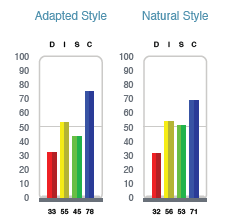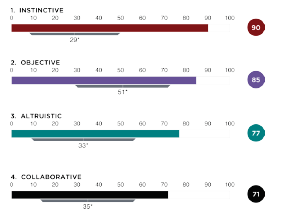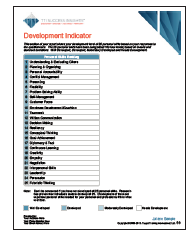First Time Managers Program
DID YOU KNOW THAT THE FAILURE RATE FOR NEW MANAGERS IS *46%!?
Why was the First Time Managers Coaching Program Created?
As a former manager in human resources, witnessing the promotion of unqualified people to management was heartbreaking. And the failure rate was proving costly. As an executive coach, I can see these failures manifest when there is a lack of solid leadership training.
New managers rarely have the training they need, and certainly don’t have any of the experience an executive possesses. Indeed, most new managers are promoted primarily because they are doing a good job in their current position. That doesn’t necessarily make them management material.
The executive staff are the people who get the resources such as training, off-site retreats, and coaching. Of course, it is a good idea to put resources behind the executive staff because, after all, they are carrying a lot of risks for the success of the organization.
But think about this. New managers are the people who could one day fill the shoes of an executive in your organization. I dare say that any executive you speak with wishes he or she had more “care and feeding” about how to manage and lead as they started up and continued to climb the ladder into the executive suite.
That’s why I’ve created a coaching program specifically designed for managers with zero to three years’ experience. This program is affordable, so the organization can not only justify, but recoup the investment, and reap benefits the company will profit from for years to come.
How does the First Time Managers Program Work?
The new manager takes the TriMetrix HD Assessment, and receives a report consisting of:
- Behaviors:

Behavioral research suggests that the most effective people are those who understand themselves, both their strengths and weaknesses, so they can develop strategies to meet the demands of their environment. This report measures the four dimensions of normal behavior: dominance, influence, steadiness, and compliance.
TriMetrix HD tells how the new manager will perform.
*Source: HR.com
- Driving Forces:
 Knowledge of an individual’s driving forces helps tell us why a person behaves a certain way. 12 Driving Forces ™ measures an individual’s top four of driving forces to tell a story of how a person derives meaning from life and work.
Knowledge of an individual’s driving forces helps tell us why a person behaves a certain way. 12 Driving Forces ™ measures an individual’s top four of driving forces to tell a story of how a person derives meaning from life and work.
TriMetrix HD illuminates what drives this individual’s behavior – the why behind their actions.
- Competencies:

An individual’s hierarchy of competencies, including his/her leadership score, is key to their success. Knowing what they are is essential to reaching one’s goals. This report is designed to assist managing and developing a career. For many jobs, personal skills are as important as technical skills in producing superior performance.
TriMetrix HD describes what this individual “has done” in 25 research-based competencies related to the business environment.
Acumen Capacity Index:

The Acumen Indicators section is designed to help individuals truly understand themselves and how they analyze and interpret their experiences. A person’s acumen, keenness, and depth of perception or discernment is directly related to performance.
TriMetrix ACI explores both how a person’s judgment impacts interaction with the external world, and his or her own self-perception.
In addition, the assessment reports contain self-coaching strategies that will guide the new manager beyond the coaching initiatives of this program.
Program Structure
Online assessment administration
3 months or 12 hours of coaching (Bonus: 1 extra hour at no charge in the first session!)
Unlimited access to the coach via phone and email during the coaching program
The Program is Designed To:- Increase clarity, focus, and direction
- Create a specific strategy and a plan to reach goals
- Build or enhance necessary skills
- Create a supportive environment to achieve success
- Deal with barriers that block goal achievement
Coaching Topics Include, but Are Not Limited To: - Leadership myths and magic
- Understanding roles and responsibilities
- Critical/strategic thinking
- Handling relationships (former peers and supervisor)
- Understanding your team’s history
- Understanding performance management
- Communication
- Problem analysis and decision making (including making hard decisions)
- Creating a culture of accountability
- Motivating your team
- Coaching
- Evaluating your team
- Continuous learning and trends
Why am I Qualified to Coach?
- Ten years of coaching executives from a variety of industries across the United States and from Israel, Chile, South America, Japan, Germany, China, and Sweden.
- Certifications include: Registered Corporate Coach (RCC), Leaders Coaching Leaders Coach (LCL) and Facilitator, Certified Professional Driving Forces Analyst (CPDFA); (CPBA); (DISC Certified); Certified TriMetrix HD Analyst (CPHDA), and Certified Professional Emotional Quotient Analyst (CPEQA)
- Formal education includes a Masters of Arts in Industrial Organizational Psychology and a Bachelor of Science in Psychology
- Six years as a Human Resource Manager
Bonus I:
One complimentary extra hour of coaching in the first session, for a total of 14 hours of coaching.
Bonus II:
Diane’s eBook, How to Give Dull, Boring Meetings a Swift Kick in the Agenda. This book provides the new manager with insights on:
- How to manage different behavioral styles in meetings
- How to determine if a meeting is necessary
- Types of meetings
- How to have more effective meetings
- Ways to make meetings fun!
Bonus III:
A complimentary “check-in” call 3 months after our final session to help ensure the new manager is still on track. This brings the total number of coaching hours to 15!!
Let's get started to give your managers the leadership foundation they need to make it all the way to the Executive Suite!
 It’s no secret that training is the first on the chopping block in organizations when times get tough. Many trainers lament the fact that they get no respect. Regrettably, there is often good reason for these opinions.
It’s no secret that training is the first on the chopping block in organizations when times get tough. Many trainers lament the fact that they get no respect. Regrettably, there is often good reason for these opinions. In the January/February issue of HR Magazine, Josh Bersin with Deloitte, makes nine predictions of “what’s in store for HR in 2015.” This is part three of a series of articles looking at each of these predictions.Training is another topic with a repeatable tune. However, training often doesn’t get much “air time” as it’s neglected entirely or the first thing to go when the bottom line gets out of tune with profits. In addition, the debate about its value plays like a broken record. But just like the title to Bob Dylan’s song, “The Times They are A-Changin’”
In the January/February issue of HR Magazine, Josh Bersin with Deloitte, makes nine predictions of “what’s in store for HR in 2015.” This is part three of a series of articles looking at each of these predictions.Training is another topic with a repeatable tune. However, training often doesn’t get much “air time” as it’s neglected entirely or the first thing to go when the bottom line gets out of tune with profits. In addition, the debate about its value plays like a broken record. But just like the title to Bob Dylan’s song, “The Times They are A-Changin’” People think that other people’s jobs are easy. “Oh, anyone can do that job.” “ I Could do that job with my eyes closed.” This is particularly true about jobs such as facilitating, teaching and training - especially training. Making matters worse, in Corporate America during a layoff, downtime, or economic turndown, training is the first position to go and the last position for rehiring. Adding insult to injury, trainers often garner the least respect of their co-workers. In short, Corporate America is not treasuring its trainers. So, this begs the question, “Can training really be that easy?”
People think that other people’s jobs are easy. “Oh, anyone can do that job.” “ I Could do that job with my eyes closed.” This is particularly true about jobs such as facilitating, teaching and training - especially training. Making matters worse, in Corporate America during a layoff, downtime, or economic turndown, training is the first position to go and the last position for rehiring. Adding insult to injury, trainers often garner the least respect of their co-workers. In short, Corporate America is not treasuring its trainers. So, this begs the question, “Can training really be that easy?”